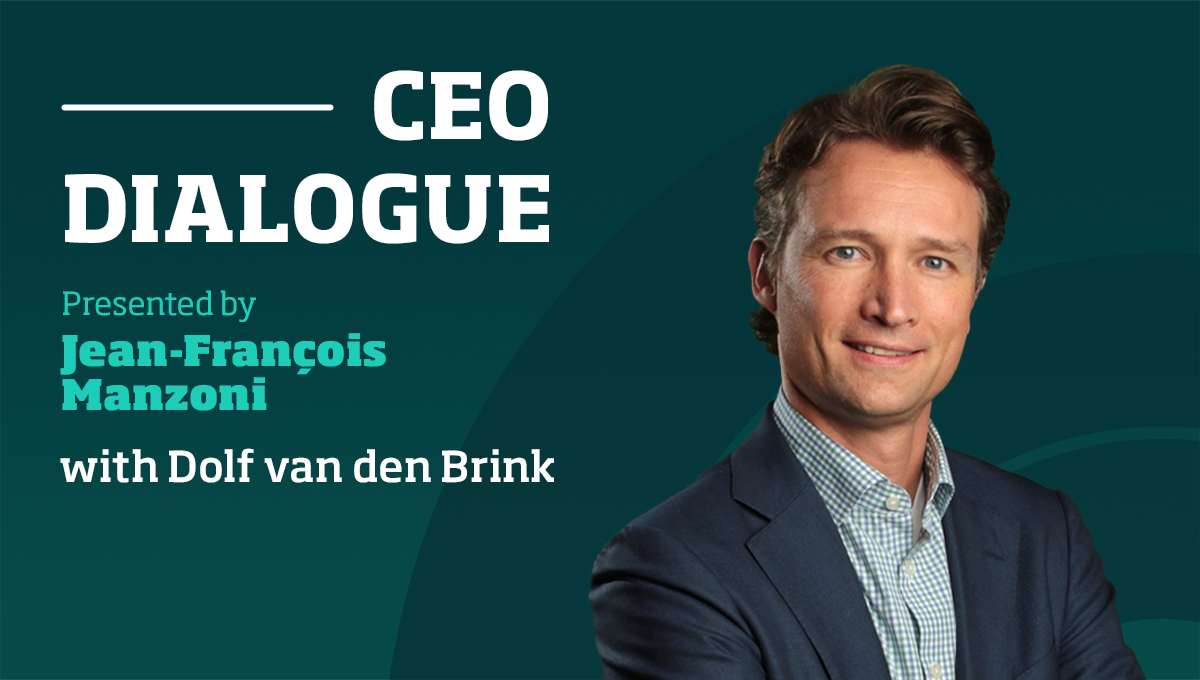
Beyond copying Apple, here’s how WeChat is unseating the first app store in China
In a market upswing, everyone’s a genius. “Only when the tide goes out,” Warren Buffett warned his fellow investors, “do you discover who’s been swimming naked.” The upswing of the Chinese market over the past three decades has been so persistent that its businesses have seemed immune to the global turbulence taking place outside the Middle Kingdom. That held true until recently, when the tide went out for Apple. The company cut its sales forecasts for the first time in 17 years, citing the unforeseen “magnitude” of the economic slowdown in China.
Even casual observers would notice that the challenge that Apple is facing in China goes beyond the country’s macroeconomic concerns. The company’s innovation engine seems to be spluttering; where the ability to innovate is concerned, other latecomers to China have caught up with and even overtaken Apple.
WeChat, China’s most frequently used mobile app, has just over one billion users. It started to offer in-app “mini-programs” from third-party developers in 2017. Since then, WeChat users have been able to book a shared ride with Didi, order a gift from JD.com, or rent a bicycle from Mobike—and use over one million other “apps within the app”—without leaving the WeChat platform. Then two weeks ago, in 2019, WeChat launched a redesign that changed the way mini-programs were presented.
Matthew Brennan, co-founder and managing director at the consultancy firm China Channel, tweeted that it offered “a new home screen for your phone with mini-apps for everything.” Hence, it presented a real alternative to Apple’s app store. “The advantage that WeChat mini-program brings is not only [the] concentration of apps into one popular (platform), but it’s very enticing to developers, especially startups and (independent operators) who have limited resources, to focus on one single ‘app store,’” said TuanAnh Nguyen, an analyst at the technology research firm, Canalys, in an interview with CNBC.
The one million mini-programs that WeChat accumulated in three years correspond to half the volume of Apple’s app store, which took Steve Jobs and Tim Cook more than a decade to build. How was WeChat able to achieve so much so fast?
Market feedback drove the development of mini-programs like it did that of many inventions at WeChat. Among the business users of WeChat, the most popular option entailed business owners sending online messages such as promotional materials or discount vouchers to consumers. WeChat had long hoped to encourage business owners to use it to provide real services or transact business online. But it had achieved little success. More importantly, WeChat had wanted to tap into the next wave of growth among small-time proprietors and mom-and-pop stores.
The big idea behind mini-programs is reducing the maintenance costs for app developers and eliminating the burden of downloading additional apps for consumers. “If you build an app from ground up, you might be spending 70% or more of your effort sorting out the backend programming, an operation that end-users don’t see or even notice. We think developers should dedicate the majority of their efforts to thinking about the content and services they are trying to provide to customers,” one WeChat executive told me. “Right now, it can cost an app developer up to a hundred thousand dollars to build a generic iOS or Android app prototype. I think we could do better and faster for developers as an additional choice for quick deployment.”
According to Forbes, “Like Apple’s iOS app ecosystem, mini-programs are developed using a proprietary language: WXML and WXSS—similar to but incompatible with commonly used HTML5 and CSS.” By packaging common user-interface components—like swiping, jumping to the next item, or drop-down menus—into standard modules, developers can focus on building content.
To be sure, advanced developers may scoff at these constraints as they tend to do regarding any simple-to-use standard. They may point out the limitations to their creativity, bemoaning the fact that the mobile apps are being forced into a vanilla format. Still, that is the value proposition of mini-programs: to lower the barrier to entry for small businesses so as to jumpstart their digitization strategies.
Chale Chen, Product Manager of the Mini Program team, Open Platform, recalled:
“We had one engineer from an FM broadcaster who decided to try to build out a mini-program. He basically spent one weekend learning how to code and launched the new application on the following Monday. That’s exactly what we try to achieve: to tear down obstacles for entrepreneurs to launch their own apps.”
As any smartphone user can attest, end-users tend to use only a handful of apps on a given day. However, most of us have dozens of them stored on our devices. Localytics found that, typically, one in four smartphone users abandoned a new app after just one session. That’s why all the mini-games within WeChat are designed to be accessible instantly, without downloading or installation. It makes them easy and convenient to play. Users can play and compete with their WeChat friends or watch others play.
There is little doubt that, WeChat is, in effect, Facebook, Twitter, WhatsApp, Zynga, Instagram, and Apple Pay all wrapped up in one. People can debate whether the rest of the world will embrace WeChat’s pioneering business model or reject its offerings even after it has proven itself in China. However, Apple has much to be concerned about: the launch of WeChat’s mini-programs no longer signifies a warning regarding Apple’s future but the unclasping of its stranglehold on its most important international market.
Howard Yu is the author of LEAP: How to Thrive in a World Where Everything Can Be Copied (PublicAffairs, June 2018), and LEGO professor of management and innovation at IMD. In 2015, Yu was featured in Poets & Quants as one of the Best 40 Under 40 Professors. He was shortlisted for the 2017 Thinkers50 Innovation Award, and in 2018 appeared on the Thinkers50 Radar list of 30 management thinkers “most likely to shape the future of how organizations are managed and led.” Yu received his doctoral degree in management from Harvard Business School.
Research Information & Knowledge Hub for additional information on IMD publications
In June 2024, at the CocoaCrafters Operating Centre, Elena Fever faced a crucial meeting with the board of directors. The discussion surrounded how to integrate Generative AI (GenAI) into the company’s supply chain strategy to enhance forecasting ...
When the dotcom bubble burst in March 2000, this did not stop the world from going digital, but it did poke holes in the concept of trust, especially in the digital world. David Goldenberg, a Belgian entrepreneur with extensive experience in manag...
China has set a bold objective to become the global leader in AI by 2030. By 2030, AI could potentially add $600 billion to China's economy annually. The country hosted over 4,500 AI companies in 2024, representing 15% of the global total. China i...
With stagnant import volumes since 2021, and import prices at levels below those suggested by fundamentals, foreign exporters face an uphill battle to convert access to the Chinese market into revenues. Notably, the volume stagnation predates the ...
NTT Corporation, Japan’s information and communication technologies (ICT) leader since 1953, was the first to commercialize internet usage on mobile phones in the 1990s, which resulted in NTT achieving much success in Japan. However, by the end of...
Building on NTT (A), the case starts with NTT’s CEO having narrowed down strategic growth options with the board to prepare NTT for the future. Past international investments in AT&T Wireless and KPN to tap into foreign markets had resulted in bil...
Since becoming DBS Bank’s CEO in 2009, Piyush Gupta led its transformation to become a standard setter globally for digitalization and customer centricity in financial services. This transformation started with fixing the basics (2009-2014), in wh...
To stay ahead of competitors, DBS knew it needed to continue to innovate and improve customer centricity. To do so, it decided to move to a horizontal organizational structure, an approach it named Managing Through Journeys (MtJs). This involved b...
Case reference: IMD-7-2593 ©2024
Research Information & Knowledge Hub for additional information on IMD publications
Research Information & Knowledge Hub for additional information on IMD publications
Case reference: IMD-7-2611 ©2024
Research Information & Knowledge Hub for additional information on IMD publications
Research Information & Knowledge Hub for additional information on IMD publications
Research Information & Knowledge Hub for additional information on IMD publications
Research Information & Knowledge Hub for additional information on IMD publications
Building on NTT (A), the case starts with NTT’s CEO having narrowed down strategic growth options with the board to prepare NTT for the future. Past international investments in AT&T Wireless and KPN to tap into foreign markets had resulted in bil...
Research Information & Knowledge Hub for additional information on IMD publications
NTT Corporation, Japan’s information and communication technologies (ICT) leader since 1953, was the first to commercialize internet usage on mobile phones in the 1990s, which resulted in NTT achieving much success in Japan. However, by the end of...
Research Information & Knowledge Hub for additional information on IMD publications
Case reference: IMD-7-2633 ©2024
Research Information & Knowledge Hub for additional information on IMD publications
To stay ahead of competitors, DBS knew it needed to continue to innovate and improve customer centricity. To do so, it decided to move to a horizontal organizational structure, an approach it named Managing Through Journeys (MtJs). This involved b...
Case reference: IMD-7-2634 ©2024
Research Information & Knowledge Hub for additional information on IMD publications
Since becoming DBS Bank’s CEO in 2009, Piyush Gupta led its transformation to become a standard setter globally for digitalization and customer centricity in financial services. This transformation started with fixing the basics (2009-2014), in wh...

